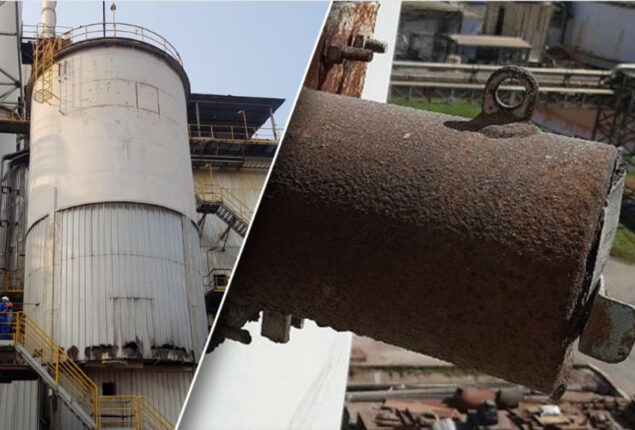Thailand sentences five poachers for killing a tigress and her cub
Five poachers were sentenced to five years in prison for tigress and...

Radioactive cylinder has gone missing in Thailand
Officials in Thailand are rushing to find a metal cylinder containing deadly radioactive materials that went missing from a power station earlier this week, warning the public of major health hazards if they come into contact with it.
The discovery comes only two months after Australia was compelled to initiate a similar search for a tiny radioactive capsule, which was eventually discovered on the side of a motorway.
But, unlike the Australian capsule, which went missing in the country’s isolated outback hundreds of miles from the nearest major city, the Thai canister went missing in a far more populous location.
The cylinder, which measured 30 centimeters (4 inches) long and 13 centimeters (5 inches) wide, was reported missing by personnel on March 10 during normal checks at the coal power plant in Prachin Buri, a region in central Thailand east of Bangkok.
The province has a population of about 500,000 people and is home to several of Thailand’s top national parks, including the well-known Khao Yai National Park, which is popular with both domestic and foreign visitors.
The parks are a popular day trip from adjacent Bangkok, a massive 14-million-person metropolis.
The cylinder was part of a silo and was used to measure ash. It contains Caesium-137, a highly radioactive chemical that scientists think is possibly dangerous.
According to a statement from the Office of Atoms for Peace (OAP), Thailand’s official regulator for radioactive and nuclear research, search teams and drones have been deployed to recover the lost cylinder.
On Wednesday, Deputy Secretary General Pennapa Kanchana told sources that radioactive detection technology was being used to identify the cylinder.
“We are searching in waste recycling shops in the area,” she said. “We are (using) survey equipment to detect for signals. For areas we cannot reach, we have dispatched drones and robots.”
Thai police are also assisting in the search, believing the cylinder has been gone since February but was only officially reported missing by the National Power Plant 5 business on Friday.
Authorities have analyzed CCTV footage from the plant, according to Si Maha Phot district police commander Mongkol Thopao, but have been hampered by “limited views” of the machine.
“It is unclear if the item was stolen and sold to a recycling shop or misplaced elsewhere,” Mongkol said. “We have dispatched our teams to recycle shops around the area… we still couldn’t find it.”
Caesium-137, according to experts, can cause major health concerns for those who come into contact with it, including skin burns from near exposure, radiation illness, and potentially fatal cancer risks, especially for those who are exposed unknowingly for long periods of time.
Caesium-137 has a half-life of roughly 30 years, which implies it might endanger the population for decades if not discovered.
Pennapa of the Atoms for Peace Office advised the people not to panic.
“If general people (come into) contact unknowingly, the health effects will depend on the level of the (radiation) intensity. If it’s high, the first thing we will see is skin irritation.”
This is not the first time something like this has occurred in Thailand.
According to a Congressional Research Service study, in 2000, two scrap collectors purchased canisters carrying another radioactive isotope, cobalt-60, and carried them to a junkyard where they were broken open.
According to the report, some workers received burn-like injuries, three people died and seven others were injured by radiation. Approximately 2,000 more people in the area were also exposed to radiation.
Nonetheless, Pennapa claims that the missing canister is significantly less radioactive than the event in 2000.
The most recent incident in Thailand followed a similar event in Western Australia in January when a tiny capsule containing Caesium-137 went missing while being transferred from an iron ore mine to a depot in Perth along a desolate outback highway.
The capsule was eventually located after a difficult six-day search, and officials are now investigating how it reportedly slid off the back of a vehicle during shipment.
Nuclear radiation experts in Australia who previously spoke to sources claimed the capsule’s disappearance was “extremely unusual” and discussed the difficulties of recovering such a small device.
Nonetheless, they pointed out that the search location was quite isolated.
“So it would be very unlikely to have much impact (on people),” said Ivan Kempson, an associate professor in Biophysics from the University of Southern Australia.
But there had been some past examples, Kempson noted, of people finding similar things and suffering radiation poisoning.
“The concern… is the potential impact on the health of the person who would find the capsule,” he said.
Catch all the World News, Breaking News Event and Latest News Updates on The BOL News
Download The BOL News App to get the Daily News Update & Follow us on Google News.